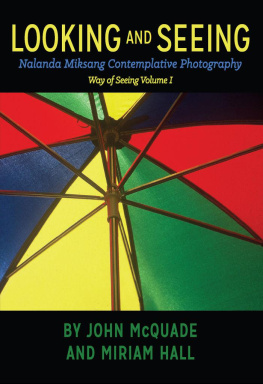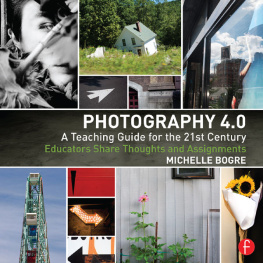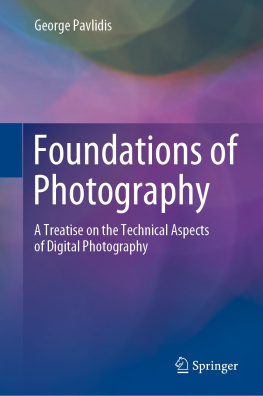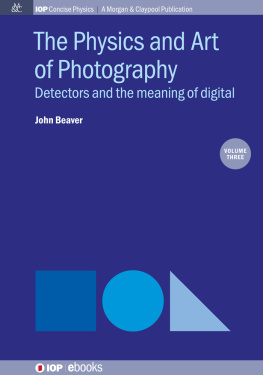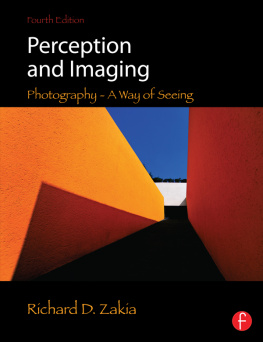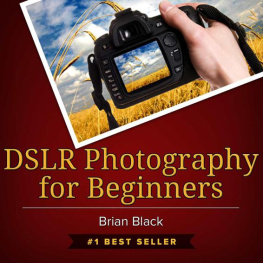LOOKING and SEEING
Nalanda Miksang Contemplative Photography
WAY OF SEEING: VOLUME ONE
By
JOHN MCQUADE
and
MIRIAM HALL
Copyright 2015 Drala Publishing
John McQuade and Miriam Hall
All rights reserved. No part of this book may be reproduced in any manner, except for brief quotations in critical articles or reviews, without permission.
ISBN: 0692383522
ISBN 13: 978-0692383520
Library of Congress Control Number: 2015903743
Drala Publishing
Madison WI
www.miksang.org
www.miksangwayofseeing.com
www.dralapublications.com
All images in this work are the creations of either John McQuade or Miriam Hall, with the exception of author photo of Miriam Hall, which is by Gloria Merriam.
This book is dedicated to our teachers Chgyam Trungpa Rinpoche
Sakyong Mipham Rinpoche
Vajra Regent Ozel Tenzin
May basic goodness dawn.
May the confidence of goodness be eternal.
May goodness be all-victorious.
May that goodness bring profound, brilliant glory.
ACKNOWLEDGMENTS
Writing a book of this scope and depth isnt easy. We went through many drafts and sought support from numerous readers, other students and teachers, and community.
First and foremost, we thank our teachers: Chgyam Trungpa Rinpoche, Sakyong Mipham Rinpoche and Varja Regent Ozel Tenzin. Without them, this would not exist.
On a more relative level, we want to thank our spouses, Alice and Ilana.
We want to give a huge, resonant thank-you to donors who made the funding of this book a no-debt proposition:
Tom Anderson and Mary Beth McBride, Augustine Baron, Lennie Birkett, Tamara Blenkhorn, Malini Dominey, Angel Eason, Araceli Esparza, Mark Edzards, Julie Einstein, Kathy Faas, Manon Francoeur, Ann and Darryl Hall, Ingrid Kelley, Jude Marion, Jerry McFarland, Jo Schaden, Mary Spike, Trudy Stern, Mark Sweet, and Jessica Winslow. To all of our Nalanda Miksang Society teachers and students: thank you for your enthusiasm, stories, and relentlessly loving encouragement to get this thing published.
Carolyn Gimian helped smoothed some doorways for us, and Andy Karr offered his support. Oliver Glosband eased us through the permissions process.
Maxine Sidran, in all her years of commitment with John to the Miksang way, gave invaluable feedback in the editing process. Our main editor, Lissa McLaughlin, jumped in with enthusiasm and clarity. Our production crewSara Ann Zola, Ilana Bryne, and many other people we dont even know the name ofmade the final stages as painless as possible.
TABLE OF CONTENTS

PREFACE
We think that were 180 degrees from enlightenment, but were only a few degrees off.
from Ruling Your World by Sakyong Mipham
Once one of the oldest and most venerable camera clubs in North America invited me to present Nalanda Miksang as part of an ongoing series. To get a sense of that camera clubs format, I attended one lecture. The presenter I watched recognized an institutionalized problem: a tendency towards photographic formula and technical skills in order to produce impressive images. His presentation was on how to break the rules of these photographic formulas to introduce more spontaneous creativity.
It was a good presentation, but I felt it missed the root issue. In my presentation, soon thereafter, I suggested that the most direct way to spontaneous creativity was not in breaking the rules. It was in making contact with the world before there are rules at all.
In Nalanda Miksang, we work with what we see. This comes before rules.
And what do we see? One answer is that we see everything there is to see. There is a certain accuracy and insight in that statement. But in practical terms, it does not give us a way to work with the visual world, because everything we see is inexhaustible.
Nalanda Miksang invites us look around via the visual elements of the phenomenal world. For instance, is there color? Does seeing involve light? Do our eyes stop at a surface? Does the visual world involve space? And do we see something? These are some of the forms, or elements, of the visual phenomenal world.
Our path is a structured training to aid our liberation from a conventional, restricted, and glossed experience of the visual world, from the conventional, objective world of static things. Through training in the forms, we begin to enjoy a fresh experience of the visual world as a radiant, phenomenal display.
In practicing, we realize that the visual world is fresh and free, and that our experience can also be fresh and free. And more deeply, we realize that this freshness and freedom can point to something deep and profoundthe spontaneous reality of the fresh and free. This connection with direct and clear perception becomes the basis for strong, vivid images, images that are artistic in the best sense: beautiful and transforming. And more, this practice is a basis for our lives.
Of course, this is not as easy as it sounds. To get here, we need to shift our orientation. For instance, photographers and all humans alike have many preconceptions concerning what we like and dont like; what we think is exciting and uninteresting; what we think is beautiful and not beautiful; what is or is not a good subject; what is or is not worth photographing; what technical formats and processes will create a great image; what will win a prize at a photographic contest; what will sell, etc. The endless trap of worries and projections goes on and onand stops us from seeing the world awaiting us.
The challenge of Nalanda Miksang is to liberate ourselves by liberating the eye.
Here we are really talking about Enlightenment. Many spiritual traditions focus on this goal of Enlightenment. Some think it requires radical change, a complete switch from one reality to another. Yet Shambhala teacher Sakyong Mipham Rinpoche talks about our enlightenment being off by only a few degrees; we just have to shift our orientation a little, and the long-term consequences may be huge. Imagine a ship that shifts its trajectory 10 percent. At first, this change may seem tiny. But once across the ocean, it will arrive at a completely different destination than it would have had it maintained its original course.
One of the main understandings of Nalanda Miksang is this few-degrees solution. Like changing our speed or momentum, this shift in orientation brings us to the radiant phenomenal world, and to the inherent radiance and goodness of our own lives.
This shift is one of the main teachings of Nalanda Miksang: shift your orientation from living in thing world, and wake to the visual world the experienced world.
The thing world is the world we presume to be objective, the world that is just there. We work with the thing world in practical ways. For instance, we pick up a cup of coffee to drink it, but even this functional action puts us in touch with the world of experience. We experience the look of that cup, the glaze or pattern of the surface, the play of light, the feel of weight and smoothness; we experience that cappuccinos tastesweet, bitter, hot but not too hot, etc. The experience world is the radiant, phenomenal world.
Nalanda Miksang wakes us to this world.
Every day when you wake up, your eyes open to the visual world. Nalanda Miksang is one way to work, and to play, with waking up, with seeing clearly, with making and sharing beautiful images, and with entering the Way of Seeing.
In our culture, we tend to default to thing world. Its like were on autopilot. We hurtle down the freeway while we daydream about our upcoming vacation in Hawaii or thinking,
Next page
